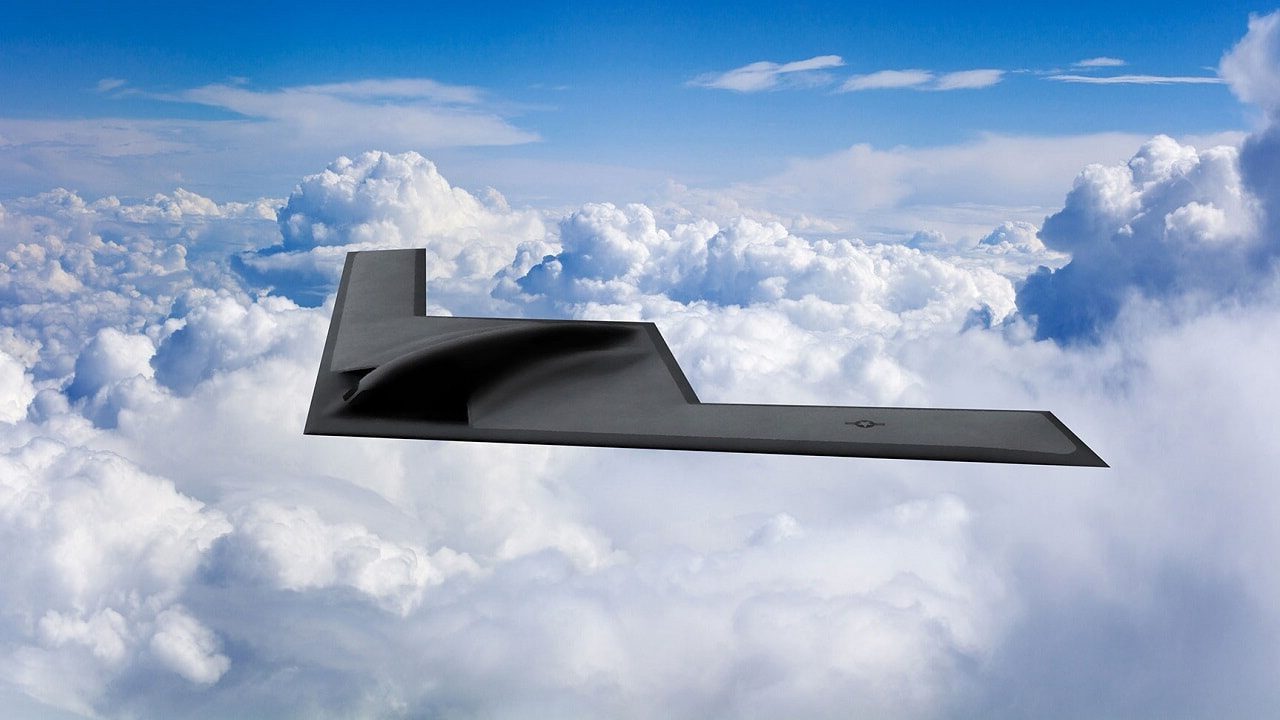We know the new B-21 Raider has many valuable attributes. It will be stealthy and nuclear-capable. It will have a global reach. It will penetrate contested airspace, fire or drop munitions, and sneak back home.
But is it fast and maneuverable enough to also function as a fighter that can take on enemy warplanes in a dogfight? The idea is certainly out there.
This would require air-to-air missiles and that’s an addition that could be expensive and negatively affect the size of its payload. The B-21 could team up with drones for aerial combat, but that effort has been canceled to save money.
Why Is the B-21 Needed?
China has a bevy of ballistic missiles that could wipe out its neighbors, including American and allied ships or air bases. The B-21 will be able to take off from the United States and complete a successful ground strike mission. It is therefore highly sought after to complement the existing B-52 Stratofortress, B-1 Lancer, and B-2 Spirit bomber force. These airplanes are difficult to keep in the air and expensive to maintain. The B-21 should replace the Lancer and Spirit airplanes in the 2030s. It will be shown to the public on December 2 and enter service in the mid-2020s.
Let’s Learn Some More About the B-21
The B-21 will have a payload of 15 to 20 tons and travel at subsonic speeds (not breaking the speed of sound) at around 600 to 650 miles per hour. Its range is over 6,000 miles and can be supplemented by aerial refueling. The B-21 can drop B61-12 tactical nuclear bombs and launch the Long-Range Standoff Weapon cruise missile that is nuclear-tipped along with the Long-Range Anti-Ship Missile. It evades radar with next-generation stealth capability.
The Bomber Has Other Attributes
The B-21 will sense targets better than other Air Force bombers, engage in electronic warfare, and operate reconnaissance to collect intelligence data. Chinese and Russian attempts at anti-access area denial of airplanes will be no match for the B-21.
Cost Is Rising
The Air Force wants to order at least 100 B-21s from Northrop Grumman and would prefer up to 170 of the arrow-shaped flying wing design bombers. They will cost $639 million each in 2019 dollars, so inflation will bump up that price.
But Could It Serve as a Fighter?
Early on the B-21 was going to have a teaming concept in which it would fly with a drone “Loyal Wingman.” This combat drone would have been armed and could have flown escort missions to protect the B-21 on offense and defense. But the “quarterback” in the air concept was canceled due to the additional cost of the unmanned craft.
Adding Air-to-air Missiles Not Likely
That leaves the B-21 mostly unprotected aside from stealth attributes. The Air Force could choose to arm the B-21 with air-to-air missiles but that would change its payload limitations and keep it from maximizing the number of bombs and standoff missiles on board.

Northrop Grumman
The Navy tried to develop the A-12 Avenger II in the late 1980s and early 1990s. This would have been a stealth bomber that could launch medium-range air-to-air missiles. But the program was a complete failure and became a cautionary tale. Billions were spent and developers struggled to make a prototype. It was finally canceled in 1991. The military is not likely to try a stealth bomber armed with air-to-air missiles again.
Try for Fighter Escort
The B-21 at one point could rendezvous with F-35s or F-22s so that there would be a fighter escort for part of the mission but that would divert valuable fighters that have other offensive responsibilities on Day One of a future conflict.
Speed and Agility Not There
Then there are the limitations of speed. The B-21 can only reach high subsonic velocity – no match for enemy fighters. Adversaries can be alerted to the presence of the B-21 due to aerial re-fueling but hopefully, it could disappear again with radar evasion and low observability. Then China and Russia have their own stealth fighters – the J-20 and Su-57 that could create problems with the B-21 should it be detected during re-fueling operations.
It is also not clear how agile and maneuverable the B-21 will be should it be hounded by enemy fighters. Using the B-21 as a fighter is not likely. It will have to depend on radar evasion in contested environments and hope enemy airplanes and air defenses are destroyed to improve the bomber’s survivability. Installing air-to-air missiles would take away from its payload size and make the bomber more expensive.
So, the B-21 will be designed for one primary mission – ground strike and possibly anti-ship duties.
Expert Biography: Serving as 1945’s Defense and National Security Editor, Dr. Brent M. Eastwood is the author of Humans, Machines, and Data: Future Trends in Warfare. He is an Emerging Threats expert and former U.S. Army Infantry officer. You can follow him on Twitter @BMEastwood. He holds a Ph.D. in Political Science and Foreign Policy/ International Relations.

